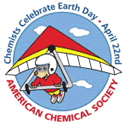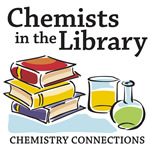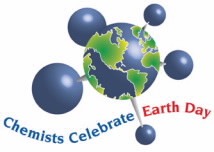Books & Video
This is a collection of print and video resources. A separate collection of Online Resources is also available.
Key: E=Elementary (K–5), I=Intermediate (6–8), HS=High School (9–12),
C=College, G=General Public
NSTA Recommends: Titles from the
National Science Teachers Association website.
Reduce Your Carbon Footprint
-
 How to Reduce Your Carbon Footprint.
(Energy Revolution) St. Catharines, ON; New York: Crabtree Publishing, 2008.
(E, I)
How to Reduce Your Carbon Footprint.
(Energy Revolution) St. Catharines, ON; New York: Crabtree Publishing, 2008.
(E, I) - This book explains what an individual’s carbon footprint is and what can be done to make a difference. Special case studies show how these ideas are currently being put into practice around the world.
- You Can Save the Planet: A Day in the Life of Your Carbon Footprint. London: A. & C. Black, 2007. (I, HS)
- By examining activities undertaken during a typical day, at school, at home and out and about, this book shows the environmental costs hidden in these activities. Meals, chores, shopping and transportation are discussed.
- Your Carbon Footprint series. New York: Rosen Central, 2009. (I, HS)
-
 Reducing Your Carbon Footprint at Home.
Reducing Your Carbon Footprint at Home. - On the Move: Green Transportation.
- Smart Shopping: Shopping Green.
- Reducing Your Carbon Footprint at School.
- Reducing Your Carbon Footprint on Vacation.
-
Global Warming and Climate Change
- Glaciers and Ice Caps: The Melting.
New York: Ambrose Video Publishing, 2008.
(I, HS)
NSTA Recommends - This video features experts explaining how global warming affects the cryosphere (glaciers, ice sheets, polar caps and sea ice). Includes an “Extras” folder with a teacher’s guide, printable maps and graphics, and quiz component.
-
How We Know What We Know About Our Changing Climate: Scientists and Kids Explore Global Warming.
Nevada City, CA: Dawn Publications, 2008.
(E, I)
NSTA Recommends - Using maps and data collected in local efforts, citizen scientist students can explore the work of many leading scientists who study climate change and its effects on living things.
-
The Down-to-Earth Guide to Global Warming.
1st ed. New York: Orchard Books, 2007.
(E, I)
Also available in Spanish: Que Es El Calentamiento Global? Barcelona: Oniro, 2008. - Presents the basics on global warming, climate change, and how readers can green up the environment in an engaging, sometimes humorous manner.
-
 An Inconvenient Truth: The Crisis of Global Warming.
Rev. ed. New York: Viking, 2007.
(I, HS)
An Inconvenient Truth: The Crisis of Global Warming.
Rev. ed. New York: Viking, 2007.
(I, HS)
Also available in Spanish: Una Verdad Incómoda: Los Peligros Del Calentamiento Global Explicados a Los Jóvenes. Barcelona, Gedisa International, 2007 and in juvenile edition DVD from Paramount. - Former Vice President Al Gore presents the science and public policy of global warming.
-
Investigating Climate Change.
Minneapolis, MN: Lerner Publications Co., 2008.
(I, HS)
NSTA Recommends - An excellent beginning text for middle and high school level students, with a good bibliography, list of web resources and glossary.
- Global Warming. (Our Planet in Peril) Mankato, MN: Bridgestone Books, 2003. (E, I)
- Well-organized introduction to global warming that includes instructions for simple experiments.
-
 Why Are the Ice Caps Melting?: The Dangers of Global Warming.
(Let’s-Read-and-Find-out-Science) 1st ed. New York: Collins, 2006.
(E)
Why Are the Ice Caps Melting?: The Dangers of Global Warming.
(Let’s-Read-and-Find-out-Science) 1st ed. New York: Collins, 2006.
(E) - Discusses the greenhouse effect and what can be done to combat global warming.
-
Global Warming.
Chicago, IL: Heinemann Library, 2008.
(E)
NSTA Recommends - Each chapter is formatted on a two-page spread and uses language and text appropriate to early elementary readers.
- Environmental Experiments About Air. (Science Experiments for Young People) Hillside, N.J.: Enslow Publishers, 1993. (E)
- Uses text and experiments to provide information about the air and about pollution and other problems related to the atmosphere.
-
Global Warming: A Threat to Our Future.
New York: Rosen Publishing Group, Inc., 2001.
(E, I)
NSTA Recommends - Uses accessible text and colorful pictures and diagrams to explain both natural and manmade factors that affect the temperature of the earth and its atmosphere.
-
This Is My Planet: The Kids’ Guide to Global Warming.
Toronto: Maple Tree Press, 2007.
(E, I)
NSTA Recommends - A book that focuses on how all living things are affected by global climate change. Photos, graphs and diagrams supplement the text.


